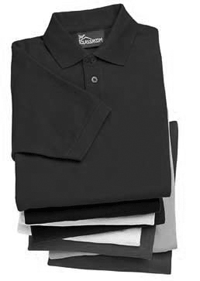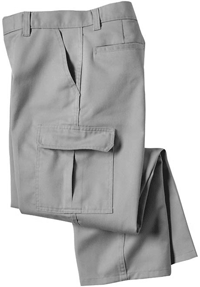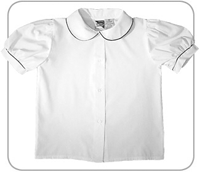|
By Beth Silver, Doubet Consulting When schools evaluate school uniform programs, they invariably ask two questions: what sizes are made and will local retailers carry all of these sizes? If uniform manufacturers and retailers cant accommodate every child, programs wont be able to achieve the results schools are looking for. During the past 30 years, the obesity rate in the United States has more than doubled for preschool children and adolescents, and more than tripled for children ages 6 to 11. With over nine million obese children in the United States and the number rising, school uniform manufacturers and retailers are taking note and accommodating families experiencing this epidemic first hand Our students are all shapes and sizes, says Jai Norment, Assistant Superintendent of Elementary Education for Toledo Public Schools Our biggest concern was ensuring there were uniforms available for students who are both larger and smaller than their peer classmates. Area retailers and their manufacturers were a huge help. They were involved in the process almost a year ago when we started discussing uniforms. That helped a lot. For years we have offered Plus, Husky, Young Mens and Juniors to accommodate our students, but when we started to evaluate how retailers in large school districts were buying and selling our products, we were amazed. Our younger students are wearing our larger sizes. Years ago, elementary school children needed sizes ranging from 4-12. Now, sizes range from 4-12 to Plus, Husky and Young Mens, says Andy Beattie, General Manager of Classroom School Uniforms. Children are bigger and we as a manufacturer must accommodate them so that uniform programs can be successful in desired school districts. Classroom is not alone. According to the SIZE USA Survey, the first national sizing survey to use scanners as the principal means of capturing body measurements, Americans are getting bigger and their body types are changing. The study has provided some telling preliminary results. I have shown several manufacturers the bust, waist and hip measurements of women who say they wear size 8-10, and they are surprised to see how much larger all three measurements are than their specs, states Jim Lovejoy, Director of the SizeUSA project for {TC} 2. The survey, which took the measurements of 10,000 Americans grouped by gender, age group and ethnicity for the purpose of determining new clothing sizes, was sponsored by companies such as Dillards, JC Penny, Lands End and Old Navy and is being eagerly read by manufacturers and retailers. By evaluating the change in adults, and watching multi pronged efforts by communities to halt the ongoing march of childhood obesity, manufacturers are now better equipped to manufacture goods for kids that are stylish yet more comfortable for their larger frames. Jack Schofield, VP Sales for School Apparel Inc, a manufacturer who mainly serves private schools, says, Its definitely something to pay attention to but we have not had a ton of responses for larger sizes. Our customers are asking us for more Husky pants with elastic waists and for a more fitted sizing in our unisex line. The interim survey data shows the US population has grown taller and heavier, but is growing heavier faster than taller. However, if you look at the grade rules for most manufacturers today, they do not reflect the survey results. Companies use sales data to obtain feedback on what sizes are selling and in what proportions but sales data never captures lost sales. Not only is the consuming public being poorly served by these lost sales but the retailer and manufacturer lose out on considerable sales volume. Inevitably, people are forced to have expensive alterations done or simply wear uncomfortable clothes. While the nation is addressing childhood obesity, we must accommodate our students with comfortable items. We at Classroom evaluated the specs of our goods while analyzing the sizes being bought and sold, and can now provide our retailers with a formula for success. The range of sizes goes from Pre-School to plus sizes in both Womens and Mens, adds Beattie. School Apparel has seen sales growth in smaller sizes of its unisex tops. More requests have been made for Youth Medium and Large sizes than the larger adult sizes, and we will continue to monitor our sales for the flat front pant with this elastic waist, says Schofield. In addition to giving a national composite, the data can also be used to look at ethnic differences in size and shape and geographic locations around the country. This shows that people of different ethnicities are different in body sizes and shapes, which could influence how sizes are stocked at retail locally. While some sixth graders are mistaken for high school students, Mr. Norment is pleased that the local retailers were prepared and able to help all his students, those smaller and larger than their peer classmates. One thing is clear: Americans of all ages now have different bodies. Therefore, local communities, schools, families and the industry will need to accommodate this new customer with different products and services.
|
|
| Above story first appeared in MADE TO MEASURE Magazine, Spring & Summer 2005 issue. All rights reserved. Photos appear by special permission. | |
| Halper Publishing Company 633 Skokie Blvd, #490 Northbrook, IL 60062 (847) 780-2900 Fax (224) 406-8850 [email protected] |
|













